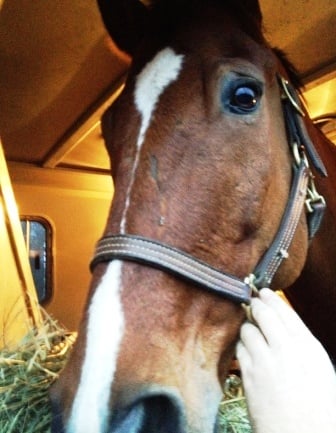A Comprehensive Guide to Transporting Horses Across the United States

Horse owners and enthusiasts understand the importance of safely and efficiently transporting their equine friends across the United States. Whether moving, participating in a competition, or taking your horse on a much-needed trail ride, it's crucial to be well-informed about the process.
In this blog, we'll delve into the critical aspects of horse transportation, covering everything from choosing the right service to preparing your horse for the journey.
Research and Select a Reputable Horse Transportation Service
- The first step in transporting your horse is finding a reputable, experienced, professional service provider.
Here are a few tips to help you with your selection:
- Check for proper licensing and insurance: Ensure the company you select has the necessary permits and insurance coverage for transporting horses across state lines.
- Read reviews and testimonials: Browse online reviews and ask for recommendations from fellow horse owners to find a trustworthy service provider.
- Get quotes from multiple companies: Compare prices and services to ensure you get the best value.
Choose the Right Type of Transportation
Horse transportation services offer different types of vehicles to suit your needs. These include:
- Single-horse trailers: Ideal for short distances and individual horse transportation.
- Multi-horse trailers: Designed to transport multiple horses simultaneously, with separate stalls for each horse.
- Air-ride suspension trailers: These trailers provide a smoother ride, reducing stress and discomfort for your horse during long journeys.
Preparing Your Horse for the Journey
Proper preparation is essential for a smooth and stress-free trip. Here's what you can do to get your horse ready:
- Health check: Schedule a veterinary examination to ensure your horse is healthy and up-to-date on vaccinations. Obtain a health certificate and Coggins test, as they may be required when crossing state lines. More information on Coggins tests and Equine Infectious Anemia (EIA) can be found at the American Association of Equine Practitioners (AAEP).
- Acclimate your horse to the trailer: Familiarize your horse with the vehicle by allowing it to explore and spend time inside the trailer before the trip.
- Pack essentials: Prepare a travel kit containing hay, water, medication, and any other necessities your horse may need during the journey.
Ensure Proper Loading and Unloading Techniques
Loading and unloading your horse safely is crucial for preventing injuries and minimizing stress. Follow these guidelines:
- Stay calm and patient: Approach the loading process calmly to help your horse feel at ease.
- Use a ramp or step-up: Use a ramp or step-up for a comfortable loading experience depending on your horse's preference.
- Secure your horse: Once inside the trailer, ensure your horse is adequately secured with a well-fitted halter and lead rope.
Monitor Your Horse's Well-being During the Trip
While your horse is in transit, monitoring its well-being is essential.
Here's how you can ensure your horse's comfort and safety:
- Plan rest stops: Schedule breaks every four to six hours to allow your horse to stretch its legs, eat, and drink.
- Monitor temperature and ventilation: Ensure the trailer is well-ventilated and maintains a comfortable temperature to prevent overheating or chilling.
- Keep an eye on your horse: Periodically check your horse during the journey to ensure it's comfortable and stress-free.
Special Considerations for Show Horses and Breeding Stock
Show horses and breeding stock often require special care during transportation due to their high value and unique needs. Consider the following factors:
- Customized transportation services: Look for providers who specialize in transporting show horses and breeding stock, as they will have the necessary experience and equipment to accommodate these special requirements.
- Constant communication: Ensure your transportation provider offers real-time updates and GPS tracking so you can monitor your horse's location and progress throughout the journey.
- Pre- and post-travel care: Arrange for specialized care and attention before and after the journey to minimize stress and ensure your horse arrives in peak condition for competitions or breeding.
Interstate and Federal Regulations
Complying with interstate and federal regulations is crucial when transporting horses across state lines. Familiarize yourself with the following requirements:
- Health certificate: Most states require a current Certificate of Veterinary Inspection (CVI) issued within 30 days of travel. Consult the APHIS Horse Travel Information for more details.
- Coggins test: A negative Equine Infectious Anemia (EIA) test, or Coggins test, is mandatory for interstate travel in the United States.
- Brand inspection: Some states require brand inspection certificates for horses entering or leaving the state.
- Check state-specific requirements: Each state may have additional regulations, such as required vaccinations or entry permits.
Emergency Preparedness
Being prepared for emergencies can help mitigate potential risks during horse transportation. Consider the following:
- Emergency contact information: Provide your transportation provider with your emergency contact information and that of your horse's veterinarian.
- Roadside assistance: Ensure your transportation provider has a plan for dealing with roadside emergencies, such as flat tires, mechanical issues, or accidents.
Transporting horses across the United States can be daunting, but with proper research, preparation, and the right transportation service, the process can be smooth and stress-free for you and your horse. By following the guidelines outlined in this blog, you can ensure your horse's safety and well-being while on the road. Trust the professionals at PetRelocation.com to provide top-notch equine transportation services tailored to your needs.
Bringing pets to United States?
Here’s what to know about moving pets to United States.
